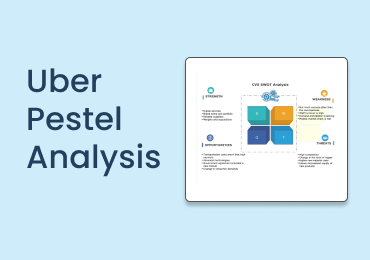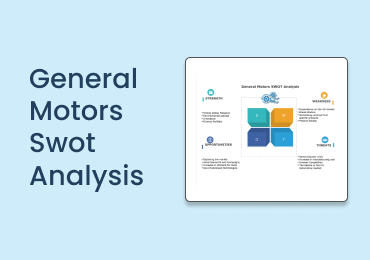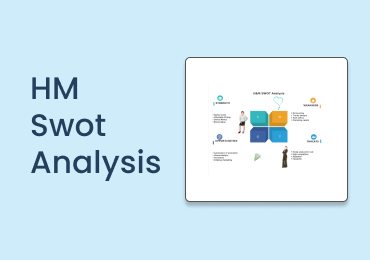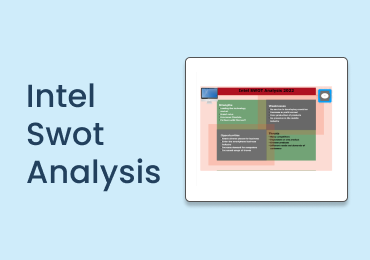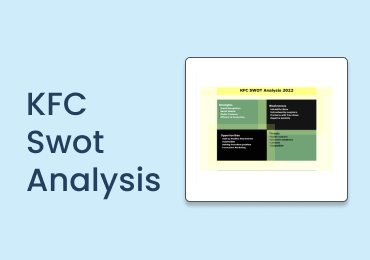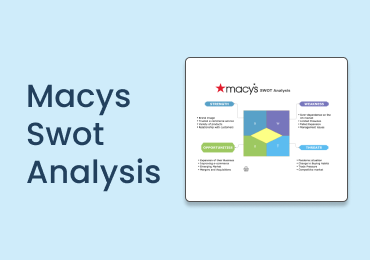Toyota Value Chain Analysis
Toyota value chain analysis is an analytical structure that includes every stage, from product creation to after-sale service. It helps to identify the corporation's activities and supply value to the user.
1. Lead-in
A value chain analysis is a visualization to help you identify and understand the important activities of your corporation. It helps you mark the activities that are potential, success-oriented strategies for your business. The other tasks in your company might not be as crucial but still, need completion. A value chain analysis helps you outsource, automate, or eliminate them if possible.
This analysis will also show where you should focus your efforts. It helps to improve efficiency by identifying processes that aren't performing well and then working on them for better outcomes.In this way, you can improve your company's efficiency and profitability. The analysis can also help you understand your customers by identifying the activities users value the most in your business. It will help you provide a better experience and win more of their trust. The Toyota value chain is one example of a chain chart involving multiple suppliers and distributors, along with government agencies (such as regulators). They help create consumer products or services.
2. Background of Toyota
Toyota is a Japanese automobile manufacturer. It was founded in 1937 by Kiichiro Toyoda and has been manufacturing cars since 1938. Today, it is one of the biggest car manufacturers in the world and has a strong presence in North America, Europe, and Asia. The CEO of Toyota is Akio Toyoda, who succeeded his father as head of the company back in 2001. At this instant, the overall revenue of Toyota Motor Corporation lies at $272.446B.
3. Toyota Value Chain Analysis
The Toyota value chain is a model that ideally explains the value chain analysis. It describes the flow of activities involved in creating and delivering a product or service to the customer. Moreover, you can also use it to describe any personal business project management, but it's best known as an approach to understanding how companies create value for their customers. It includes two distinct types of value chain activities.
- The primary activities
- The secondary or support activities
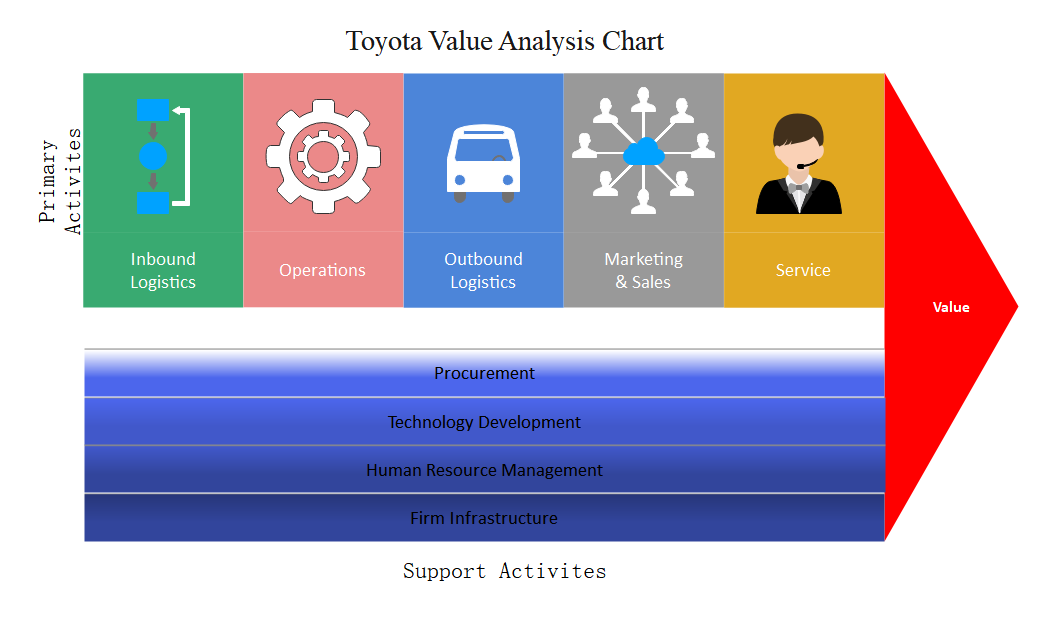
Primary Activities
A primary activity is directly linked to the customer. They include product development, production, distribution, and sales. Primary activities are often referred to as value chain activities because they are the most important in a chart.
Inbound Logistics
Inbound logistics is receiving and transporting goods to a distribution center or warehouse. It includes all activities of a product entering a warehouse and when it is ready for sale or use by employees. Inbound logistics include:
- Receiving: The first step in this process, receiving, involves taking possession of items from their point of origin. You must have sufficient space available to store all incoming shipments properly. If not, they may become damaged or even lost due to insufficient storage space at your corporation.
- Inbound Transportation: Moving larger quantities is more complex than moving smaller products. So, several stages may be involved in processing these shipments, depending on their size. For instance, you might need forklifts during phase 1 but not later.
Operations
Operations are typically a large part of the value chain. They're often the most important part. Operations are the core of any value chain. They are what transform inputs into outputs and create value for your company. Operations include everything from manufacturing to service delivery, but they can also be broken down into sub-functions like marketing and finance.
Outbound Logistics
Outbound logistics is moving raw materials, parts, and subassemblies to the assembly point. Shipping these to customers is known as "turnaround" or "first mile". It involves taking raw materials from one location and converting them into finished goods ready for shipment. The outbound logistics of Toyota value chain consists of three main functions:
- Supply Chain Management
- Logistics Services
- Distribution Support
Marketing And Sales
Marketing sales are the two primary functions responsible for creating demand for a product or service. Marketing is about searching out potential customers, communicating the value of your product or service to them, and then closing the sale. In comparison, sales involve convincing someone to buy something when they may or may not need it-this can be a difficult work.
Service
Customer service is a core value of Toyota. It's not just the job of employees but also customers' responsibility to report issues and concerns promptly so the staff can address them. Toyota expects customers to provide feedback about their experiences in order to improve on aspects such as speed or quality of service delivery. Plus, they want the users to understand how certain services affect other areas within the vehicle, such as performance.
Support Activities
Support activities are the baseline of Toyota's strategy of vertically integrating its manufacturing processes. Ultimately, it means that Toyota owns all stages of production, from raw materials to finished products. It allows them to control costs better and ensure quality control at every stage in their value chain.
Procurement
Procurement is the process of buying goods and services. It includes purchasing, receiving, inspecting, testing, and shipping goods. Procurement activities are an important part of the Toyota value chain because they allow you to reduce costs by outsourcing them to a third party. Toyota's procurement department works within its supply chain management system (SCMS). It ensures that suppliers provide quality products at competitive prices while maintaining uniformity across each stage of their production process. Besides that, it helps to conserve time or materials on substandard items.
Technology Development
One of the most important aspects of Toyota's value chain is technology development. It is a vital step in creating new products, services and improving existing ones. It involves research and development, helping them create better products for customers. For instance, Toyota is investing 5.6 billion dollars in EV batteries to take a step up.
Human Resource Management
Human resource management (HRM) is a function that encompasses activities related to managing human resources. It is an important part of an organization as it helps develop the employees and their growth. To develop a strong value chain, Toyota must focus on its human resources department. The company must have excellent employees who can work together as a team and perform their duties effectively. By hiring people with high moral values, Toyota can ensure that all its products are produced with high-quality standards. The premium build-quality ensures buyer satisfaction and trust whenever they choose the product for purchase.
Firm Infrastructure
Firm infrastructure, also called organizational or business infrastructure refers to a firm's physical and human resources. It includes things like buildings, facilities, equipment, and vehicles. All the physical assets that support a company's operations and its internal systems for managing people and information collectively make its infrastructure. It consists of financial instruments such as loans and bonds to finance business operations and equipment such as computers, software licenses, and office space.
4. How to Do a Value Chain Analysis in EdrawMax
EdrawMax is an online tool that is exceptionally ideal for value chain analysis, thanks to its user-friendly interface and excessive user control. The program gives extreme dominant handling to the customer. Therefore, the customers can modify minor details according to their desire. The steps will show you how to do a value chain analysis of your business in minutes.
- Step 1: The first step is to prepare yourself with proper resources. You need enough data on the corporation to make a value analysis chart. Start with distinct details and make your way to minor informational aspects like additional technology and service. Once you have enough data, download EdrawMax for free and login into it.
- Step 2: Start by clicking "New" and then going into "Business". You'll see a "Strategy And Planning" tab where you can find stock value chart templates. On top of that, you can choose EdrawMax "Templates" section to find the suitable pre-made template and click "Use Immediately" to start editing it.
- Step 3: Once you get your distinct template, start adding informational keywords inside the shaped boxes. Make sure you connect the relevant boxes and organize them accordingly.
- Step 4: Once you add the relevant text to their shapes, start customizing the template. You can change colors, fonts, and many more things inside the layout. Plus, EdrawMax allows you to add components like cliparts, icons, and emojis inside the chart.
- Step 5: Finally, click "File" and "Save As" to export the file. To shoot your chart layout in the template community, you can use the "Publish" button.

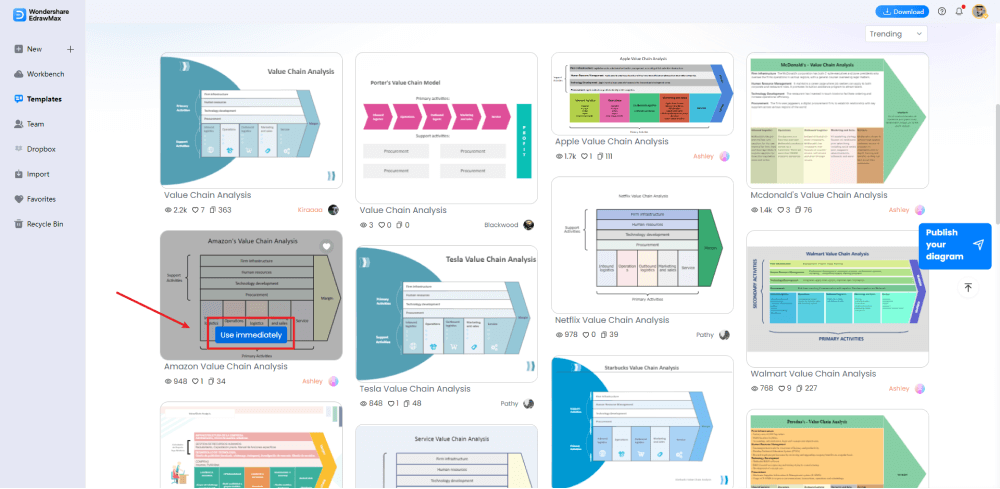
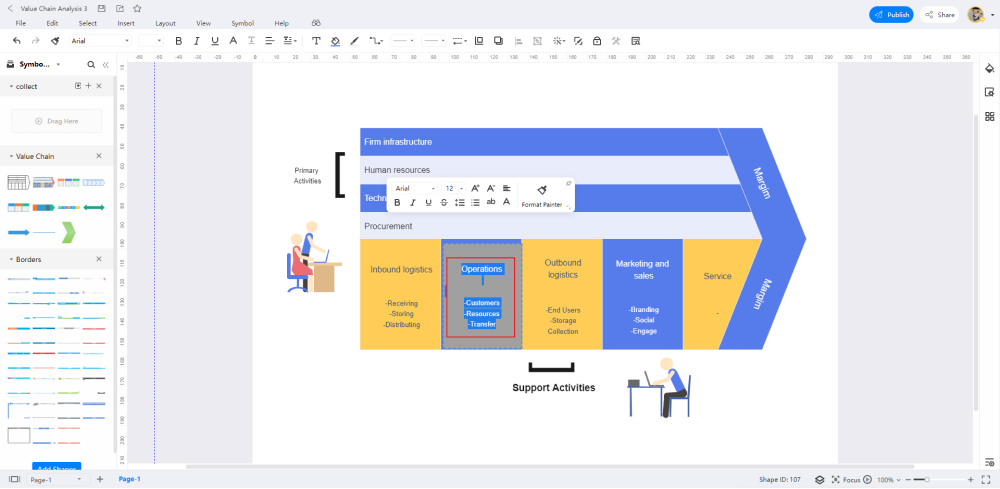


5. Key Takeaways
A Toyota Value Chain analysis is an excellent way to understand their business model. Toyota is known for its quality products and services, which is why it has maintained a reputation for decades. A company's strategy has always been about marketing and innovation, but it's also about maintaining control over every aspect of the process. It actively monitors elements from raw materials to manufacturing processes, all while keeping costs down as much as possible. For that reason, it helps to keep prices low for consumers.
All the above perks are possible only if you have an ideal value chain analysis chart. To create one that satisfies the needs, experts suggest using a universal program like EdrawMax that has every tool for the process.
Reference
-
By Surabhi Sugathan. An empirical study on growth of supply chain management in Toyota Motors, [online]. Available at: https://www.researchgate.net/publication/354559063_An_empirical_study_on_growth_of_supply_chain_management_in_Toyota_Motors.
-
By Tembani Nkomo. Analysis of Toyota Motor Corporation, [online] Available at: https://scholar.harvard.edu/files/tnkomo/files/analysis_of_toyota.pdf.
